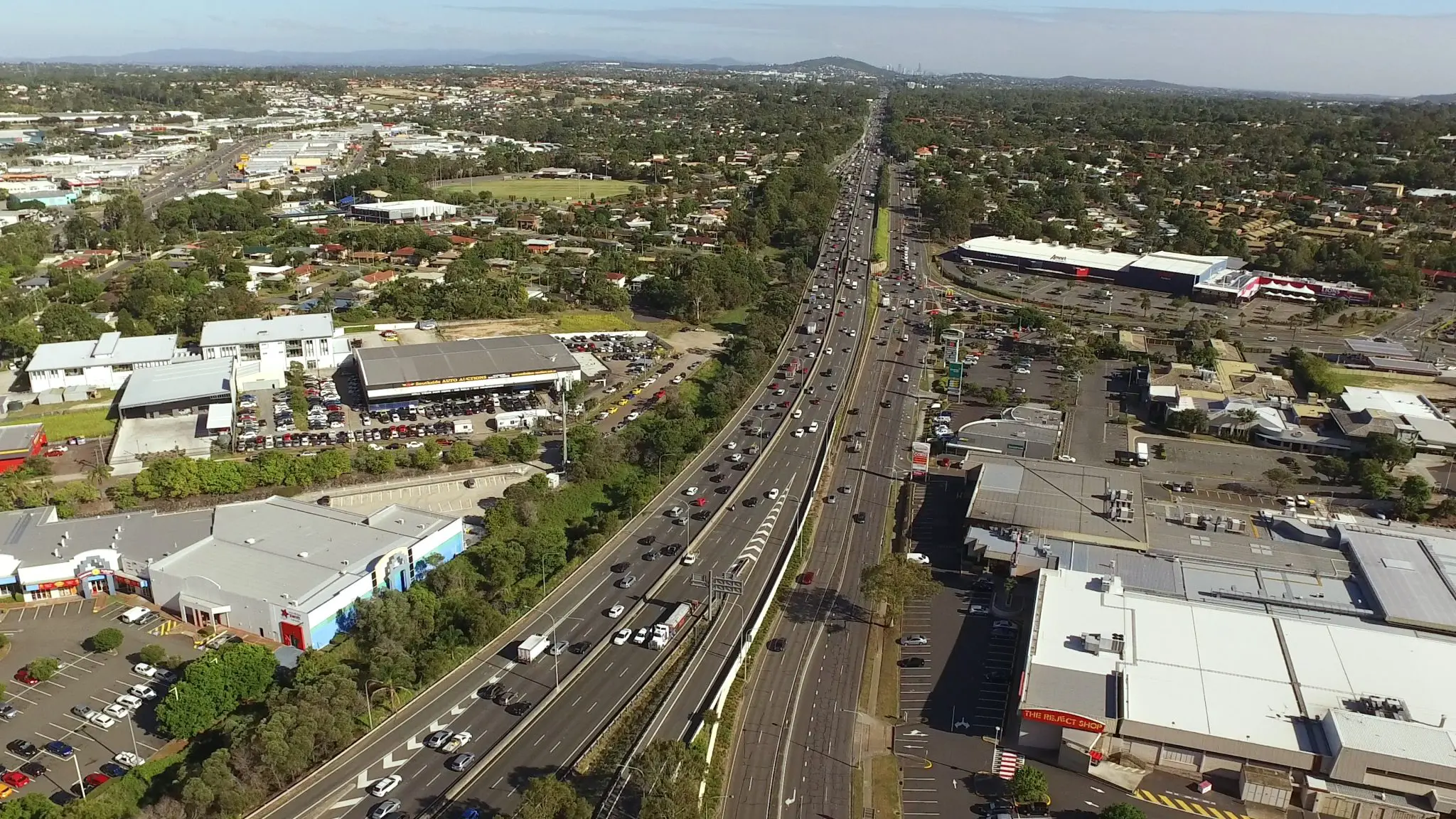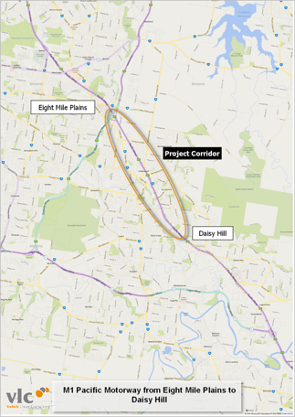
M1 Pacific Motorway – Eight Mile Plains to Daisy Hill
End client
Department of Transport and Main Roads
Services
Location
As part of the National Land Transport Network, both the Australian and Queensland Governments are planning for and delivering major upgrades and improvements to the M1 Pacific Motorway between the Gateway Motorway and the New South Wales border. $749 million has been committed to upgrade the Eight Mile Plains to Daisy Hill section.
VLC was commissioned by TMR in August 2016 to provide travel demand modelling and network performance analyses for the Preliminary Evaluation (PE) phase of the M1 Pacific Motorway (Eight Mile Plains to Daisy Hill) project. M1 EMP2DH Detailed Business Case (DBC) was undertaken as an extension of the previously-mentioned modelling projects, updating both to use the latest available network, demographic and travel behaviour assumptions. The EMP2DH DBC includes upgrades of 8.5 kilometres of the M1’s northbound alignment and 1.1 kilometres of the southbound alignment and extends the South East Busway by 6.6 kilometres including a new busway stations at Underwood and Springwood.
Client requirements
The Queensland Government commissioned VLC to undertake an options assessment and contribute to the development of a Detailed Business Case for improvements to the Eight Mile Plains to Daisy Hill section of the M1 Pacific Motorway. VLC undertook travel demand forecasts, a road network performance assessment and an economic appraisal.
Delivered outcome
VLC provided and interpreted travel demand forecasts using Zenith, economic analysis or project options, contributed to the writing of Detailed Business Case chapters, and managed a subconsultant carrying out social impact assessment. Road network performance and economic assessment including travel time benefit was also assessed using a Dynamic Traffic Assignment (DTA) model. VLC’s work has been heavily peer reviewed and is informing decisions being made by the Department of Transport and Main Roads, Building Queensland and Infrastructure Australia.
A broad range of non-infrastructure treatments, existing infrastructure treatments and new infrastructure investments were assessed to determine the most appropriate solution aligned to the service needs for the project.
The options analysis assessed the extent of infrastructure required, examined staging and constructability options and considered the economic viability of proposed solutions. Transport modelling and economic analysis reports were delivered to the client.
